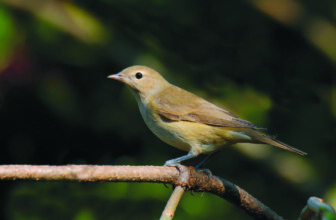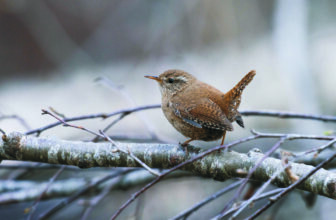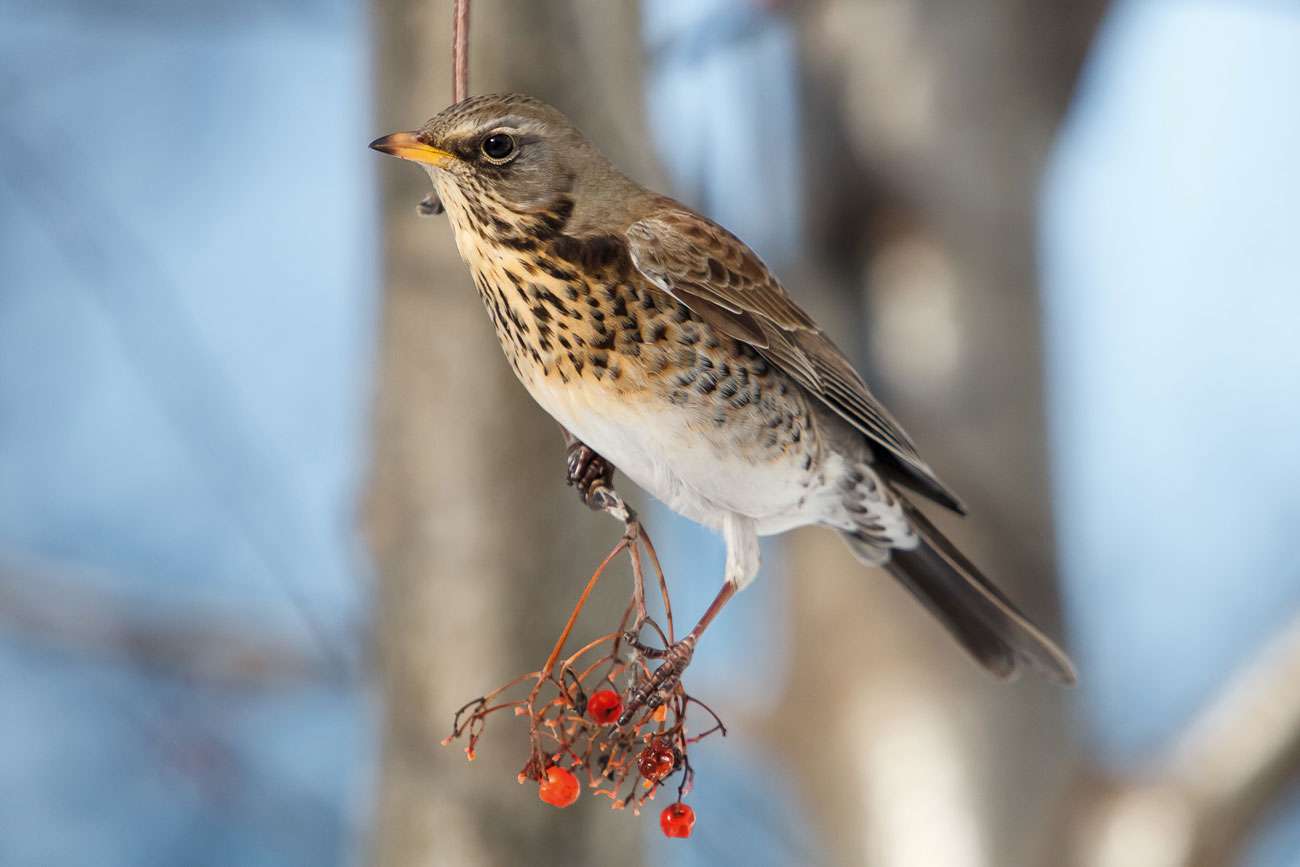
Fieldfare (Turdus pilaris)
The apples are ready and now I’m waiting for the ‘chock-a-chock chock’.
No, it’s not some sort of sweet fireworks night treat for the kids but it is my recipe to attract a rather shy type of thrush to the garden.
Last month I wrote about the autumn’s rusty tones arriving with the Redwing in October. Around two weeks later we get its beefy big brother flying over for the winter to escape the piercing chill of Scandinavia. The Fieldfare.
Small flocks often audibly announce themselves as they head south-west in waves, about twice the height of mature Surrey oaks. Luckily, although they are known to fly at over 10,000 feet, many come low enough to see with the naked eye.
I liken their calls to ‘chock-a-chock chock’ and when you hear them you know that the first heavy frosts will not be far behind. Overhead an invading flock can look a motley army because every few wingbeats individuals fold their wings for a rest, so they are never in unison.
Most of the earliest arrivals just seem to carry on going beyond Surrey and it is usually not until the winter that you can catch up with later arrivals ‘on the deck’ in the fields.
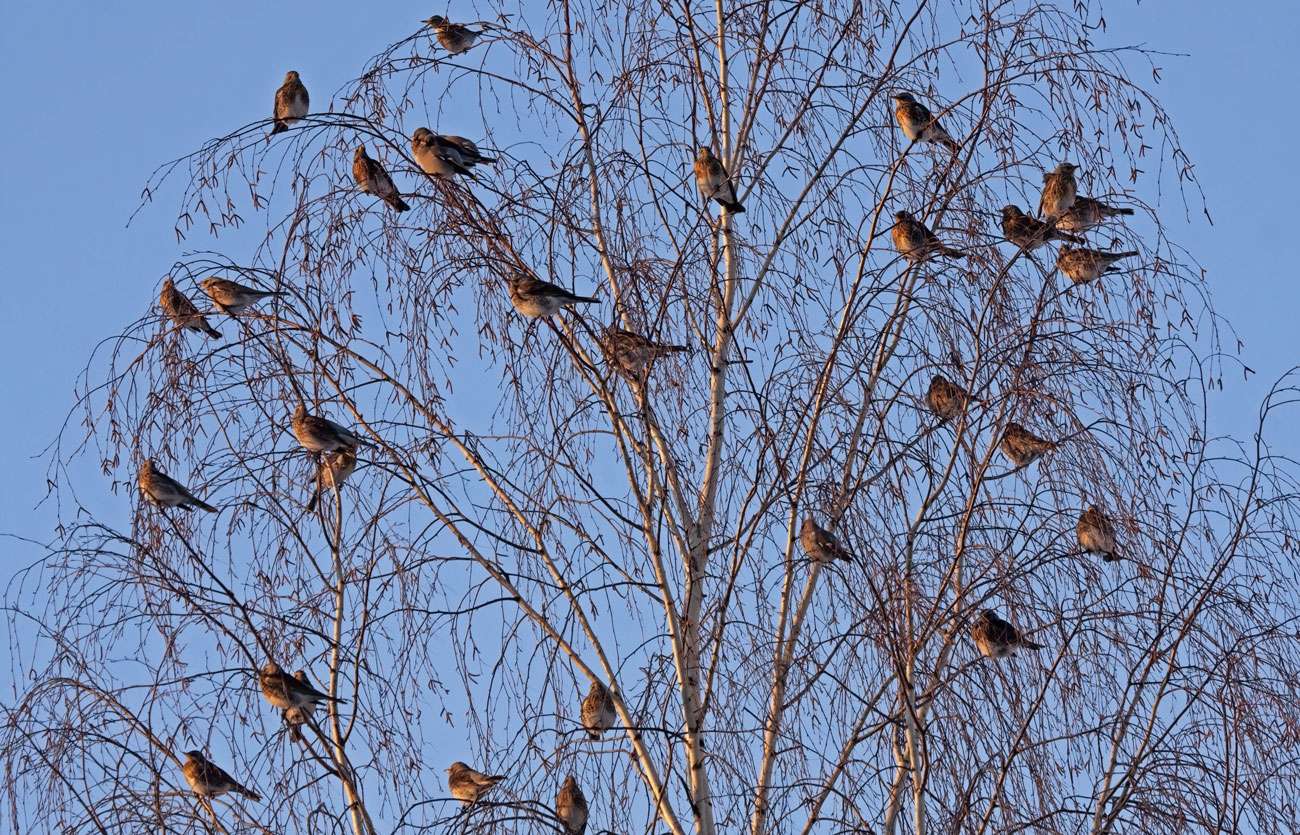
Fieldfare (Turdus pilaris)
Ploughed, stubble or grassy fields can be good for the worms later in the season when they have already stripped the orchards of fallen fruit.
This month and into December look out for them in hedges or trees laden with hawthorn, whitebeam and rowan berries. Scores of them will roost in the Scots Pines of The Hurtwood and along the Greensand Way, ready to descend just after dawn for a red berry breakfast.
Fully laden trees can be stripped of fruit in just a few days and then they remain immediately bare of these birds too. All is quiet again as the ravenous visitors move on to where the food is and their squeaky, hoarse chatter invades pastures new.
When the winter gets harder though the Fieldfare, whose name comes from the Anglo-Saxon felde-fare – ‘the traveller over the fields’ – is ready and hungry enough for a trade-off. He will come into your garden to bash out the last of any remaining apple flesh.
Last year a bossy Fieldfare visited my lawn in Cranleigh almost daily from 28 December and stayed faithful to the area throughout January’s darkest days, visiting other gardens too. He was present right through to 25 February.
He saw off all the local Blackbirds, who mistakenly thought his apple larder was meant to be shared with them, and some neighbours and I enjoyed close views as he patrolled his patch, pecking three or four rotting apples into submission every morning.
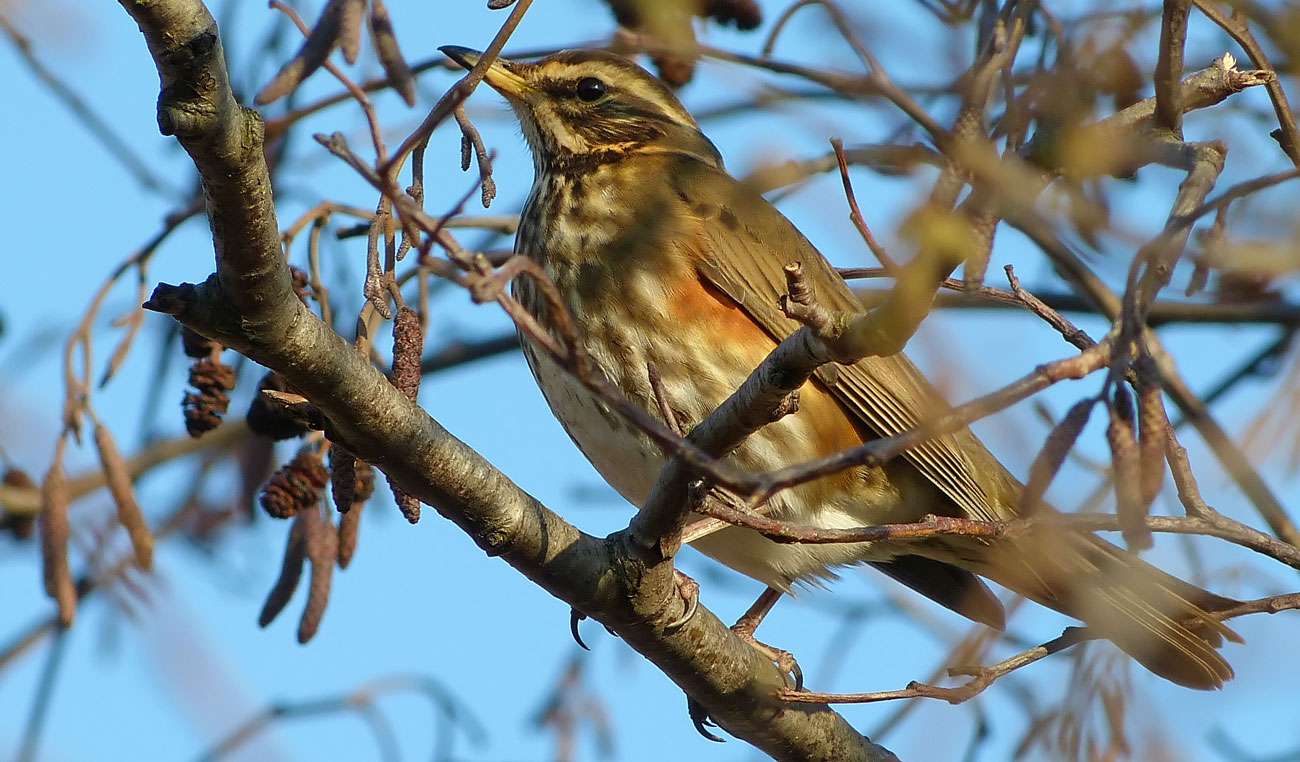
Redwing (Turdus pilaris) © Magnus Manske
Each day I would look out to see if he was still around and I was amazed how often it was that only a small movement revealed his presence because his camouflage protected him well among the various orange and brown shades of fallen leaves.
The Fieldfare is a handsome strutting chap and bigger than a Blackbird. He has a grey head and nape – it looks like he is wearing a little helmet for battle – while black ‘mascara’ runs like war paint around his eyes.
Grey extends down the bird’s nape, lower back and rump, while the tail is long and black. His back – or mantle – and wings are a beautiful chestnut colour, the breast and belly sides are rich orange, especially in males, and give way to whitish underparts decorated with little black ‘arrowhead’ markings.
There is a small white stripe above the eye, the bill is yellow with a black tip and the legs are dark pinkish brown.
My earliest around here was exceptionally ahead of the main influx, on 24 September, but most years birds noticeably start going over only from mid-October.
Keep a look out for them into the early Spring. My latest was 17 March although my friend Dave Harris saw as many as 15 very late birds on fields in Cranleigh on 22 April 1990.
I have seen them in summer in various European countries, including Poland, Finland and Estonia. There they are often much tamer as they venture down to lawns to collect a different diet to here – mostly worms for feeding their young.
A Fieldfare ringed in Ewhurst on 24 February 1956 was seen again at Reinsvoll, Norway, on 23 July the same year. That was some travel over numerous fields! I wonder if he made it back here. Hopefully my apple addict of last winter will do so.
Twitter – @Crane_Spotter
Click here to see all of Robin Stride’s previous Crane Spotters.




